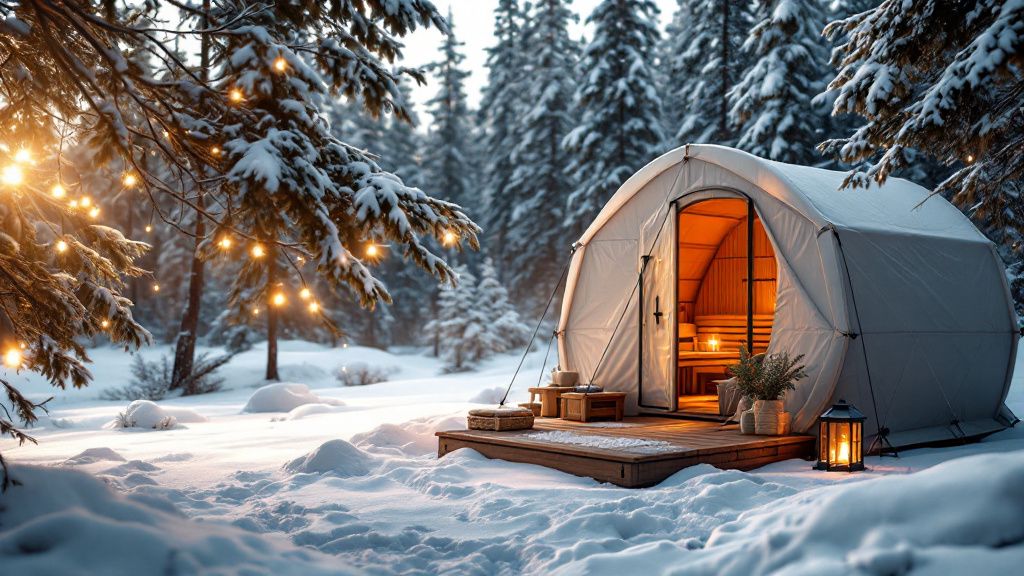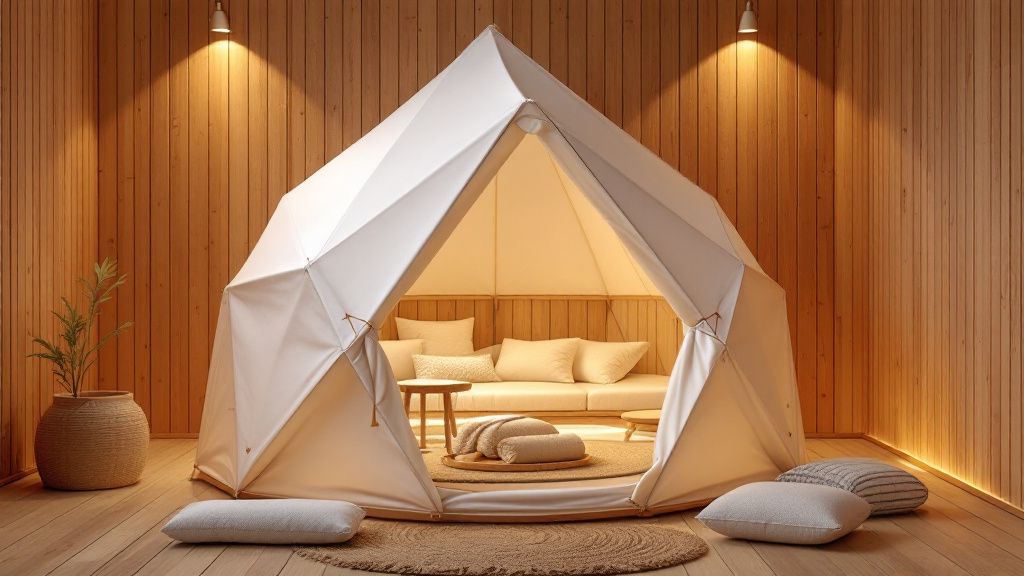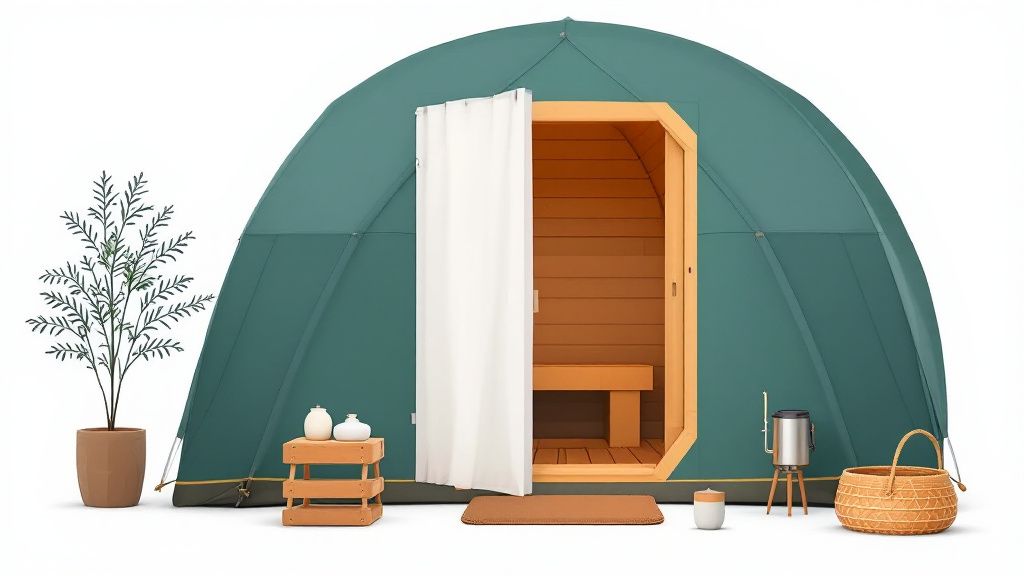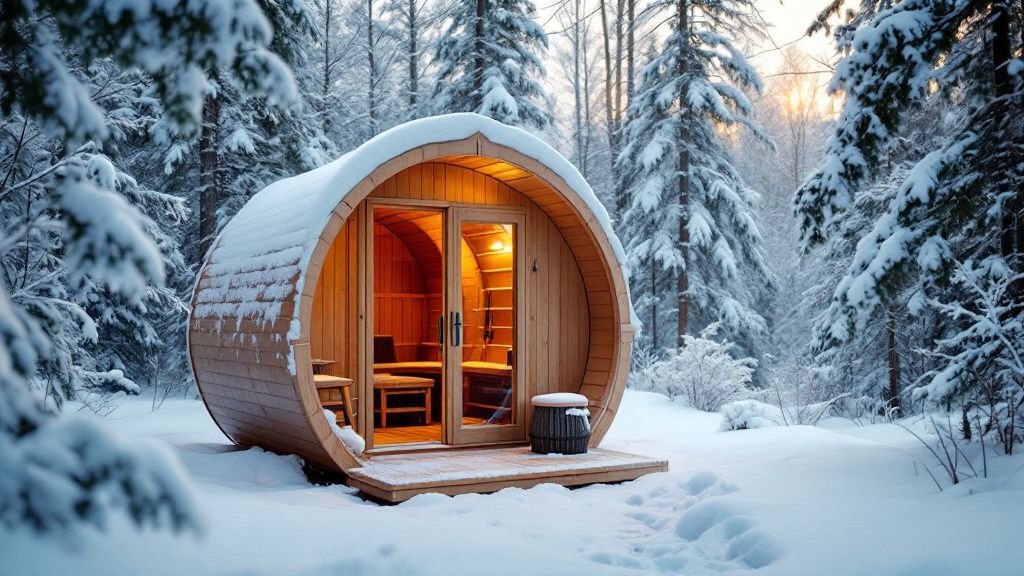When you think about enjoying a sauna experience in the comfort of your backyard, it's crucial to understand that one primary concern is how sauna tents manage heat retention outdoors. Portable sauna tents, convenient and accessible, are designed to keep the heat effectively while providing you with a relaxing experience. However, these tents can lose heat quickly due to environmental factors such as wind, external temperature, and the quality of the tent's material. When you're outdoors, preventing heat loss in sauna is vital to maintaining optimal temperatures. To prevent this from happening, consider using windbreaks, high-quality insulating materials, and checking the tent's seal to ensure that your sauna tent retains heat efficiently, ensuring a peaceful retreat regardless of the weather.

Factors Influencing Heat Loss in Outdoor Sauna Tents
Understanding the factors influencing heat loss in outdoor sauna tents is essential for maximizing your relaxation experience. One significant factor is the external temperature. When you use portable sauna tents in colder climates, the temperature differential between the inside and outside can lead to quicker heat dissipation. The choice of material for your sauna tent also plays a crucial role in how well it maintains heat. Thicker, insulated fabrics help retain warmth more effectively.
Wind is another element that can drastically impact how well your sauna tent holds heat. Small openings or poor fits can allow gusts to come through, quickly cooling the interior. Ensuring that your tent is set up in a sheltered location or using natural windbreaks like bushes or trees can mitigate this issue. Selecting a spot with minimal wind exposure is a proactive step in preventing heat loss in sauna tents.
Proper ventilation is important but also presents a challenge. Too much ventilation can lead to a rapid temperature drop. When setting up your sauna tent, ensure the vents can be adjusted to maintain a balance between airflow and heat retention. This way, you enjoy the benefits of fresh air without compromising the tent's heat.
For example, some outdoor enthusiasts opt to reinforce the zippers and seams of their sauna tents to prevent heat leaks. These reinforcements may include weather strips or additional insulation panels. Such steps can be a cost-effective way to enhance the tent's heat retention capabilities. Paying attention to small details like these can make a noticeable difference.
Consider the ground surface choice for your sauna tent setup. Using insulating pads or mats can prevent heat from escaping into the cold ground, further improving the tent's heat retention properties. Every element counts when optimizing your sauna therapeutic session outdoors.

Common Misconceptions About Sauna Tent Heat Loss
There are several common misconceptions about sauna tent heat loss that might lead you to underestimate the efficiency of your portable sauna tents. Many believe that these tents instantly lose heat when placed outdoors, which isn't entirely true. With the right setup and materials, a portable sauna can maintain its warmth effectively, even in lower temperatures. It's crucial to understand and address these myths to optimize your sauna experience.
One common false belief is that sauna tents are ineffective in windy conditions. While wind poses a challenge, it doesn't make outdoor sauna usage impractical. Comparing the performance of traditional wooden saunas vs portable sauna tents, you will find that the latter can retain heat successfully with proper placement and additional measures such as windbreaks. Understanding these differences can guide you in enhancing your sauna’s performance.
Another misconception is that more ventilation always leads to increased heat loss. While excessive ventilation can indeed result in a rapid drop in temperature, moderated and adjustable vent options in portable sauna tents allow you to balance airflow and warmth, thus preventing unwanted heat loss in sauna settings. Recognizing such nuances can help you appreciate the efficiency of portable saunas while correctly managing their setup.

How to Prevent Heat Loss in Your Sauna Tent
To effectively prevent heat loss in your sauna tent, start by selecting the right location for setup. Setting up your portable sauna tents in an area that offers natural protection, such as near trees or buildings, can help shield them from the wind. Choosing the right spot is essential for heat retention, ensuring your sauna can maintain temperatures even in challenging conditions.
The quality of the material used for your sauna tent greatly affects how well it retains heat. Opt for tents made with insulated panels and high-quality zippers that are designed to minimize heat escape. Investing in a well-constructed sauna tent can provide a more consistent and relaxing experience by keeping the interior nice and warm.
An unpopular opinion about sauna tent heat management is the suggestion to utilize additional insulation materials. Some may overlook this, believing the initial construction is sufficient. However, adding reflective thermal blankets or insulating mats beneath your sauna tent can significantly reduce heat loss. Utilizing such methods can enhance the efficiency of your sauna session.
Pay attention to the seams and openings of your sauna tent. Check for any drafts or weak spots where heat might escape. Reinforcing these areas with high-quality adhesive weather strips not only extends the life of your sauna tent but helps in preventing heat loss in sauna setups. This attention to detail ensures a more pleasurable sauna experience.
Regular maintenance of your sauna tent can also improve its ability to hold heat. Keeping the tent clean and inspecting it for any damages makes a notable difference. Testing the temperature retention in various weather conditions helps you understand and improve your sauna's performance, making every session as warm and comforting as possible.

Best Practices for Using Sauna Tents in Cold Weather
Using sauna tents in cold weather can be a rewarding experience if done correctly. Selecting a location with natural windbreaks is your first step, as it helps shield your sauna tent from harsh winds. By picking a spot near shrubs or trees, you create a buffer that enhances heat retention while reducing the cold's intensity, crucial for maintaining a comfortable sauna temperature.
Layers of insulation within or under your sauna tent can significantly improve its efficiency. Consider using thermal blankets or insulating mats to prevent the cold ground from absorbing warmth. These additional layers act as barriers, effectively retaining the heat generated inside the tent and ensuring that your experience remains cozy, even when temperatures drop outside.
While many believe that portable sauna tents are unsuitable for extreme cold, there’s a strong case for their effective use with careful preparation and the right equipment. Modern sauna tents are capable of providing excellent warmth by incorporating advanced materials and designs. Understanding how to maximize these features can allow you to enjoy a sauna session even in winter conditions.
Ventilation plays a crucial role in maintaining the quality of your sauna experience. Adjustable vents allow you to control airflow without sacrificing warmth. Proper management of vent openings minimizes heat loss while ensuring fresh air circulates, which is essential for comfort and safety during extended sauna use in cold environments.

